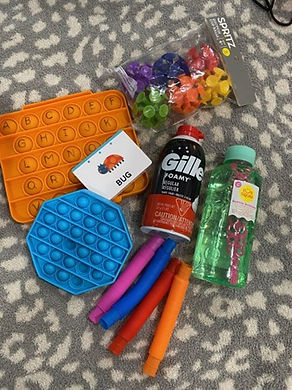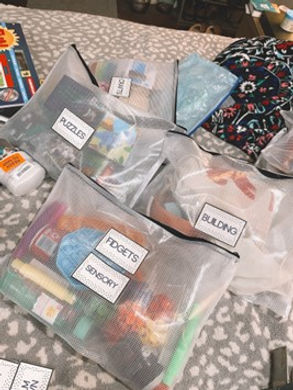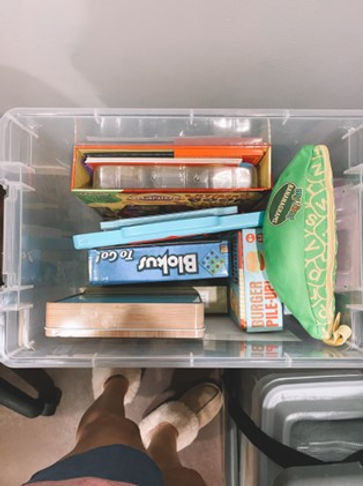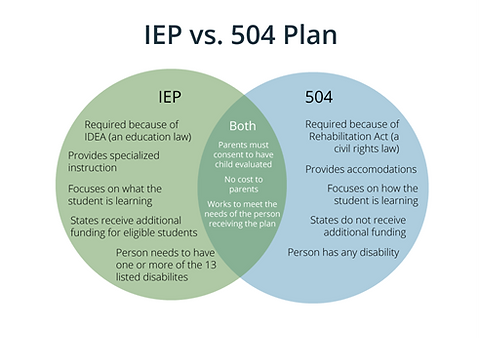Special Education In Oklahoma
Perspectives of OKlahoma sPED
By: Emmett McKeel, Daniel Mutai, Gavin Pendergraff
STILLWATER,OKLA — Education within Oklahoma is notorious for being inadequate on all levels from teachers to students to administrative entities. The Oklahoma government will cut education funding as a means to fund other important government entities like investments, oil and gas – even law enforcement.
Although it ends up being the first thing to be cut from Oklahoma’s repertoire of government funding entities, education is the crucial key to a functioning society. Better education correlates with poverty reduction, increased communication and critical thinking skills that would ultimately make society a well functioning machine.

The lack of funding has led to a lack of training when it comes to equipping Oklahoma’s special education teachers with the necessary tools and information regarding each individual student's specific needs and situation.
“The hardest challenge was trying to figure out what to do daily because there wasn’t really any training.”
Said a new special education teacher within the Oklahoma Public school system who has asked to stay anonymous due to the fear of losing their job

“I just had to rely on what I already knew about working one-on-one and in group settings with children. Each child has their own unique circumstances and the Teaching assistants are not told anything about them, just put with them daily and eventually figure out how to help them.”
For example, Certified Occupational Therapy Assistant (COTA) K. McWhirt is responsible for over 70 kids with special needs on a weekly basis due to a lack of staffing and the decreasing amount of people pursuing careers in special education. This staggering figure is the case for a majority of kids within this system as they are not given the full attention they deserve to help them pursue their dreams.
“The amount of kids that are in the system now and the ability to service them all in a week,” said McWhirt when asked about the biggest challenges she faces in her field. “Last time I checked there is about 72 kids that I have to see a week by myself and it’s only 30 minutes per session for each kid.”
McWhirt has faced a multitude of other surprises in her field with problems like the frequent absence of a controlled environment.She lacks a designated classroom for her students in numerous schools she travels to. She spoke heavily on the importance of privacy for these kids and how the lack of such space has had a negative effect on their learning experience, especially when considering the limited allotted time given for each student. This has led to a number of bullying incidents from other students aimed at the kids with special needs that McWhirt has witnessed herself.
“I guess I had this picture perfect– that we would have a room or a space to treat,” said McWhirt. “Some of the schools I do, but there are some schools where I am literally treating kids in the hall or in the cafeteria. I don’t really like that because I like to give them privacy. Little kids can be mean and they make fun of them.”

“With Covid now, if the kid was in Kindergarten at the time when the pandemic started, they missed two pivotal years of learning how to write and read,” said McWhirt. “ A lot of kids I taught are on IEPs now (Individual Education Program) simply because they fell behind during those years.”
There are two types of plans when it comes to education accommodations, The 504 program and the IEP. The 504 program is a formal learning plan for students who suffer from a range of physical and mental disabilities with a range from mild and severe symptoms. The 504 program falls under special education and has a focus on how the student is learning more than with Individualized Educations Programs (IEP).

The 504 was created to stop dicrimination within education so that students can keep up with their peers.
Doug Wilson went through the 504 program within Texas and managed to get accommodations from elementary through high school. Once he graduated high school he went to Oklahoma to pursue a higher education.
“My experience going through the 504-program in Texas truly helped me with my learning disability,” said Doug. “In my early years I would normally need to go to an extra classroom and get extra help from teachers one-on-one.”
According to worldpopulationreview.com, Oklahoma is ranked number 46 in education quality compared to the other 50 states. This ranking was promised to improve by Governor Kevin Stitt as a means to campaign to the citizens of Oklahoma to gain popularity.

On the flip side we have seen other states make good on their promises regarding special education. For example,Texas -ranked 31 according to the same website- is not highly ranked, but is still rated much more positively as compared to Oklahoma.
“The difference I felt from high school to college [in Oklahoma] was less help one-on-one and just extra class to do what I needed extra time on. Whenever I would go into that extra class I had to take I wasn’t able to get help because of me not being able to have help from neither the students nor my teacher.”
Brittany Mutai has a child that is actively within the special education system in Oklahoma. Her experiences have been mixed as well.
“The school has been cooperative in our meetings and phone calls,” said Brittany.
“However that is basically where it ends; I had to explain to the counselor what sensory sensitivities were. Also, his teacher this year had no idea he even had a 504 plan until I sent her a concerning email.”
It’s apparent Oklahoma’s education system has some studying to do. With more funding and education, the public school systems could rise in quality. However, an ongoing crisis in the drop of education majors and the low pay in the state means we are left to wonder about the future state of education, both specialized and general.